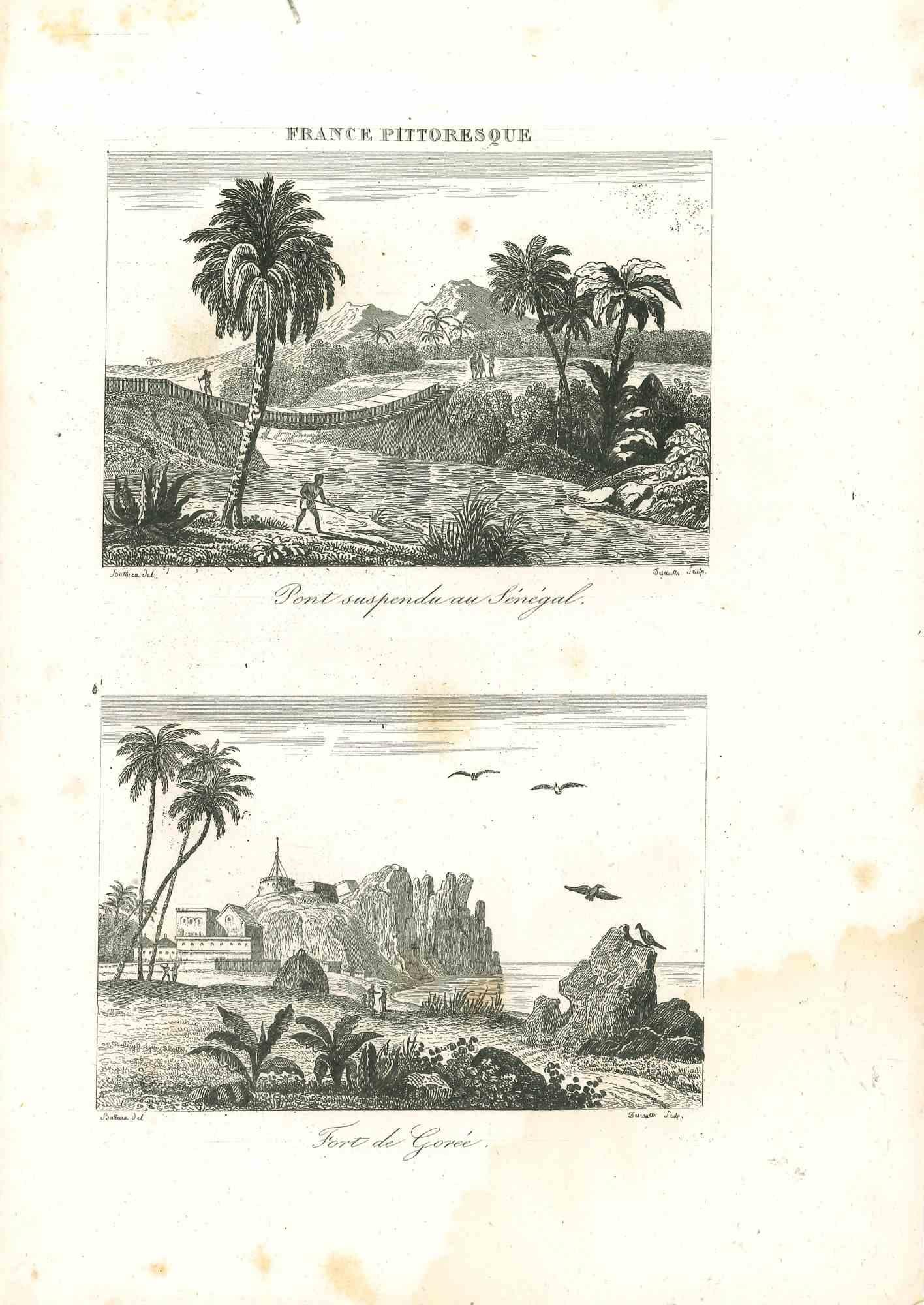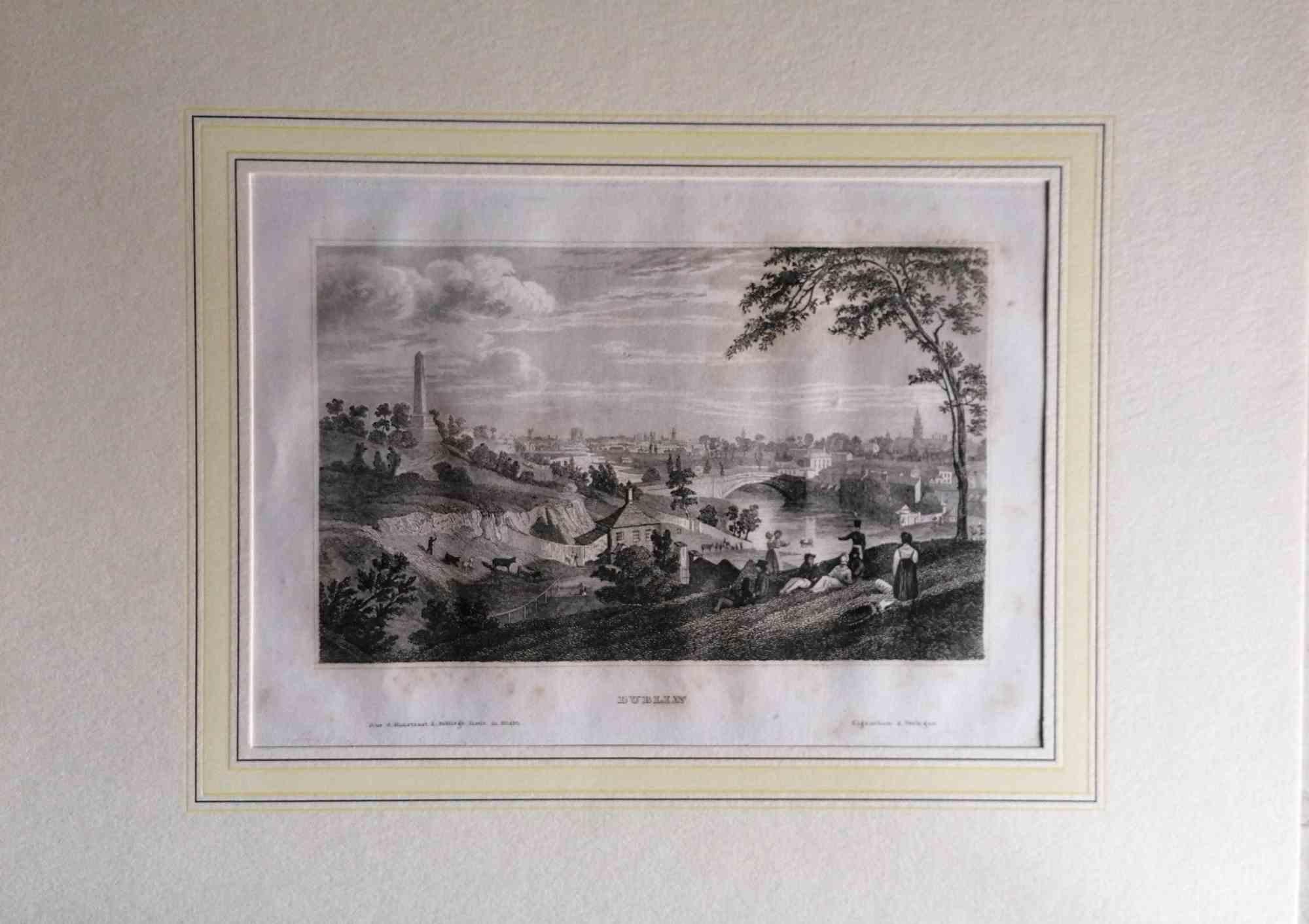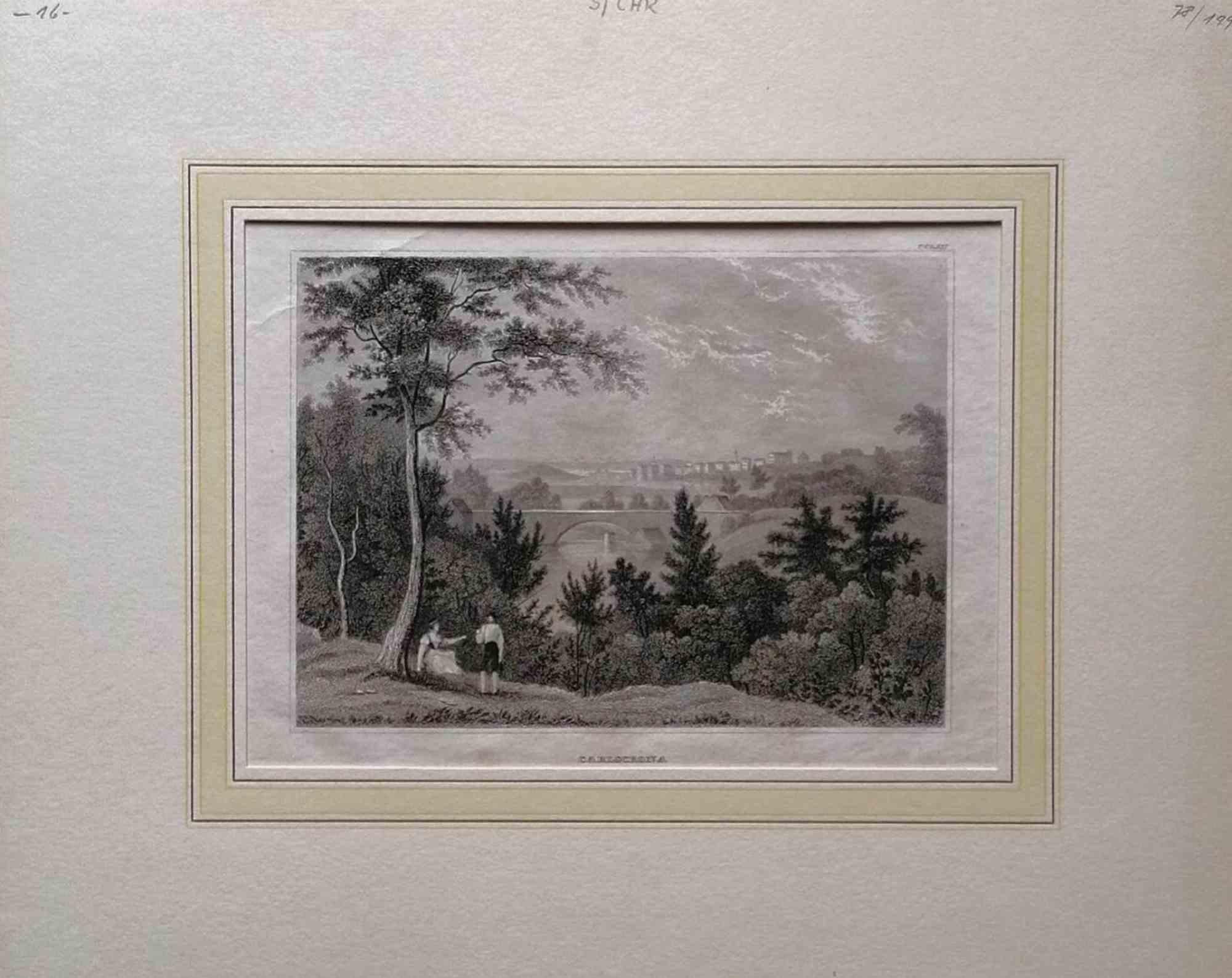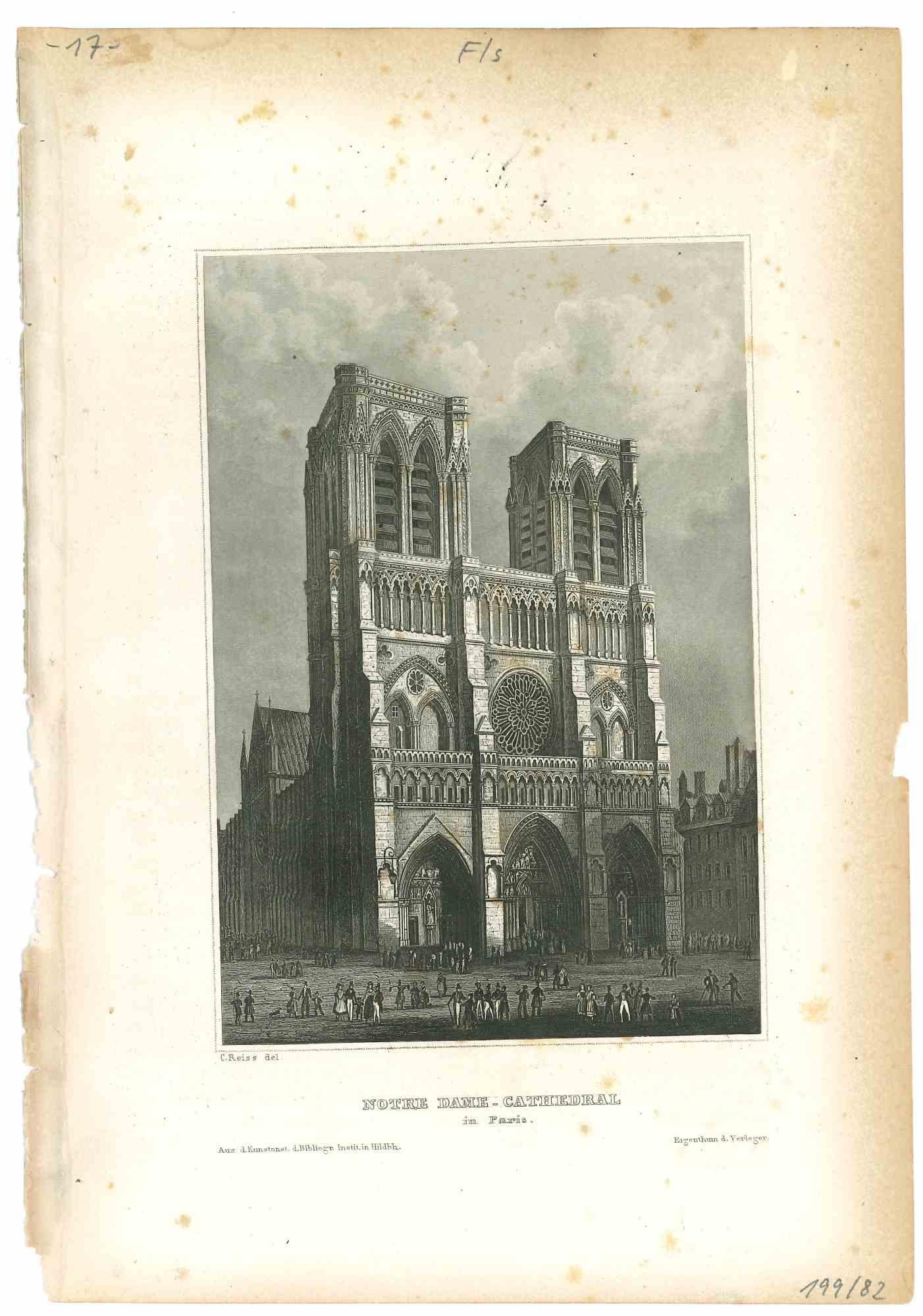Items Similar to Toulouse-Lautrec, Travail de tapis, The Circus by Toulouse-Lautrec (after)
Want more images or videos?
Request additional images or videos from the seller
1 of 8
Toulouse-Lautrec, Travail de tapis, The Circus by Toulouse-Lautrec (after)1952
1952
About the Item
Lithograph on wove paper. Unsigned and unnumbered, as issued. Good Condition; never framed or matted. Notes: From the volume, The Circus by Toulouse-Lautrec, 1952. Published the Paris Book Center, New York and André Sauret, Paris; printed by Fernand Mourlot, Paris, in an edition of one-thousand, five hundred and seventy, October, 1952. Excerpted from the folio, From early childhood Toulouse-Lautrec was attracted by the circus. It was, in fact, through a friend of his family, René Princeteau, himself a painter, that he acquired this taste while still very young. Princeteau was a painter of horses and their riders, both men and women, and he exerted quite an influence on Lautrec's early education. Despite the great difference in their ages, they got along splendidly and the circus became their favorite form of enter-tainment. Later, Lautrec paid frequent visits to the Molier and Fernando circuses as well as to the Nouveau Cirque. His strange silhouette with its long torso set on over-short legs could be seen standing close to the "rail" during training periods, or later, loafing about in the corridors. His retentive memory noted everything : the movements of the horses and their riders, the acrobats, the facial expressions of the clowns, an entire world of its own intensely alive and, for him, fascinating. He took few rough notes and only occasionally made a quick drawing of the grimaces of the famous clown, Footitt, whose sketches with the negro " Chocolat" as partner attracted the whole of Paris to the Nouveau Cirque. Lautrec had met Footitt, whom he admired very much, in a bar in the Rue Royale and, for a while, he used to go there to join him. But although Lautrec liked the spectacle of the circus, he also liked to go to bars and cafés, with the result that, at the beginning of the year 1899 he gave evidence of mental disorders. There were those who insisted even that he was mad; but this was not the case. He was seized with occasional fits of hallucination, following upon long moments of lucidity. His friend, Arsène Alexandre, said of him: " This strange, daring little man descended into Hell, but he came out of it with his own fur singed; for a time, alcohol, loathsome alcohol, ravaged the painter as it had his models". With the approval of his doctor, and to calm Lautrec's nerves, a plan was envisaged to send him on a voyage to Japan. In the end, however, he went to Doctor Semelaigne's nursing-home in Neuilly. This eighteenth-century house, called originally "Folie Saint-James", proved to be very hospitable. But Lautrec did not remain inactive. His solitude weighed on him, in addition to which he was determined to prove that his mind was not really affected. He asked for pencils and paper, and soon his room was transformed into a studio. Unfortunately, models were few, the house attendants being so very different from the creatures that peopled Montmartre. Should he return to his usual subjects? He had already portrayed too many bars and houses of ill-fame. It was here that he decided to depict the circus scenes that had always struck his fancy. So he set to work. It has been thought that at this period he worked from memory. This is undoubtedly true as regards the drawings in which Footitt, "Chocolat" and the woman-clown Cha-U-Kao are to be seen. But it is also possible, as M. Adhémar believes, that he executed others from nature. The explanation is a simple one : Lautrec's condition having rapidly improved, he was soon allowed to go out with an attendant. As it happened, the Molier circus, in the Rue Bénouville, was not far from Lautrec's nursing-home. He was surely accompanied. But he was able to sketch from life while the troupe was practising or, at least, return to the nursing-home and set down immediately what he had just seen. In many of these subjects it will, in fact, be noted that the benches are empty, as during a rehearsal, and those of the drawings that reproduce the riding exercices engaged in by Molier's pupils, Blanche Allarty and Anna Bradbury, show extraordinary precision. This fact was already noted by Maurice Joyant. In any case, Lautrec succeed in constituting little by little a complete series of thirty-nine drawings in black and colored crayons, all of which show great mastery and are in no way the work of a mad-man. All they show are certain exaggerations of proportion, but this is a question of artistic deformation and proves, as Miss Mongan has emphasized, "the integrity of his painter's faculties.” Lautrec set down the things that struck him with a humour that was all his own : the gentle movement of a rider's skirt, while the big horse continues to gallop peacefully around the arena; trained dogs, especially poodles, being drilled by a clown armed with a whip; or acrobats, so skillful and so true to stock, risking their lives for the public. Most of these drawings as, for instance, "the rearing horse," "the jockey,” and “the animal-trainer", are masterpieces of composition and movement. They denote an aristocratic vision of the circus that is quite different from that expressed by Rouault, a little later (I). The colored pencil which, in an awkward hand, can produce such weak effects, is used here with supreme freedom of movement. Lautrec uses too, occasionally, a china-ink wash as, for example, in the "negro playing the banjo". However, once these drawings were finished, Lautrec, who had also completed several lithographs, began to be bored, and took a general dislike for his fellow-patients whom he termed "too dis-gusting". Friends who called to see him, expecting to find him haggard and barely able to speak, now found themselves in the presence of a little man with a keen eye and a generally relaxed expression. His condition having shown regular improvement, he was therefore released. He was to retain, in fact, a rather pleasant memory of his stay at Saint-James. Alas, however, his taste for alcohol soon returned, dominating his entire existence. Meanwhile, what became of the drawings? Lautrec gave one, "the trainer-clown", to his friend Arsène Alexandre, with the following inscription, "Madrid, Easter 1899, to Arsène Alexandre. Later, a German named Heinrich Stahl, acquired this same drawing. As regards the thirty-eight others, Lautrec gave them away quite as generously to his close friend, Maurice Joyant, of whom he also made an excellent portrait in hunting costume. When Joyant died these drawings constituted part of his estate. A French art-patron, who bought them around I93I was obliged to part with all but three shortly afterwards. Finally, the majority were taken to America by the well-known art dealer, Knoedler, who disposed of them separately. However, in the early nineteen-hundreds Maurice Joyant, who was impressed by the high quality of this series of drawings, contracted with the printer Manzi for reproduction of twenty-two of them in intaglio-heliogravure, and an album was brought out in 1900s. Then, in view of the success of this early volume, a plan to make known to the public the remaining seventeen was set afoot. Owing to the efforts of Madame Dortu, Maurice Joyant's heir, a second album was published in 1932. The reproductions, this time by Daniel Jacomet, were made from phototype plates and colored by hand. Both these volumes have now become very rare. Today, in 1953 - and the interest that attaches to this event is only too evident - we are indebted to the publisher André Sauret, for finally being able to compile in this one volume, the thirty-nine drawings that compose the series " The Circus". Here the reproductions were made by the lithographer, Fernand Mourlot, whose mastery of the colored lithograph is once more manifested. The "pungency" of the lithographic process is indeed perfectly suited to the requirements of these drawings, and restores as well the spirit of Lautrec's works. —Charles PERUSSAUX, Attaché au Cabinet des Estampes de la Bibliothèque Nationale.
TOULOUSE-LAUTREC (1864-1901) was a French painter, printmaker, draughtsman, caricaturist, and illustrator whose immersion in the colourful and theatrical life of Paris in the late 19th century allowed him to produce a collection of enticing, elegant, and provocative images of the sometimes decadent affairs of those times. Born into the aristocracy, Toulouse-Lautrec broke both his legs around the time of his adolescence and, due to the rare condition pycnodysostosis, was very short as an adult due to his undersized legs. In addition to his alcoholism, he developed an affinity for brothels and prostitutes that directed the subject matter for many of his works recording many details of the late-19th-century bohemian lifestyle in Paris. Toulouse-Lautrec is among the painters described as being Post-Impressionists, with Paul Cézanne, Vincent van Gogh, Paul Gauguin, and Georges Seurat also commonly considered as belonging in this loose group. He influenced generations of artists including Picasso who had traveled to Paris where he at first imitated Toulouse-Lautrec's style.
- Creation Year:1952
- Dimensions:Height: 12.125 in (30.8 cm)Width: 9.25 in (23.5 cm)
- Medium:
- After:Henri de Toulouse-Lautrec (1864 - 1901, French)
- Period:
- Condition:
- Gallery Location:Auburn Hills, MI
- Reference Number:1stDibs: LU1465214300162
About the Seller
4.9
Platinum Seller
These expertly vetted sellers are 1stDibs' most experienced sellers and are rated highest by our customers.
Established in 2002
1stDibs seller since 2021
857 sales on 1stDibs
Typical response time: <1 hour
- ShippingRetrieving quote...Ships From: Auburn Hills, MI
- Return PolicyA return for this item may be initiated within 1 day of delivery.
Auctions on 1stDibs
Our timed auctions are an opportunity to bid on extraordinary design. We do not charge a Buyer's Premium and shipping is facilitated by 1stDibs and/or the seller. Plus, all auction purchases are covered by our comprehensive Buyer Protection. Learn More
More From This SellerView All
- Picasso, Composition, La Comédie Humaine (after)By Pablo PicassoLocated in Auburn Hills, MILithograph on vélin du Marais paper. Inscription: Unsigned and unnumbered, as issued. Good condition; unframed. Notes: From the volume, Verve: Revue Artistique et Littéraire, N° 29-...Category
1950s Cubist Figurative Prints
MaterialsLithograph
- Cup 2 Picasso (Sparks 113; Field 168; ULAE 123), Jasper JohnsBy Jasper JohnsLocated in Auburn Hills, MIArtist: Jasper Johns (1930) Title: Cup 2 Picasso (Sparks 113; Field 168; ULAE 123) Year: 1973 Medium: Color lithograph on wove paper Edition: 1,500 Size: 14 x 10.5 inches Inscription...Category
1970s Pop Art Figurative Prints
MaterialsLithograph
- Dufy, Au Maroc, Lettre à mon peintre Raoul Dufy (after)By Raoul DufyLocated in Auburn Hills, MILithograph on vélin d'Arches Arjomari paper. Unsigned and unnumbered, as issued. Good condition. Notes: From the folio, Lettre à mon peintre Raoul Dufy, 1965. Published by Librairie ...Category
1960s Modern Figurative Prints
MaterialsLithograph
- Dufy, Régates, Lettre à mon peintre Raoul Dufy (after)By Raoul DufyLocated in Auburn Hills, MILithograph on vélin d'Arches Arjomari paper. Unsigned and unnumbered, as issued. Good condition. Notes: From the folio, Lettre à mon peintre Raoul Dufy, 1965. Published by Librairie ...Category
1960s Modern Figurative Prints
MaterialsLithograph
- Dufy, Autoportrait, Lettre à mon peintre Raoul Dufy (after)By Raoul DufyLocated in Auburn Hills, MILithograph on vélin d'Arches Arjomari paper. Unsigned and unnumbered, as issued. Good condition. Notes: From the folio, Lettre à mon peintre Raoul Dufy, 1965. Published by Librairie ...Category
1960s Modern Landscape Prints
MaterialsLithograph
- Matisse, Crayon, Dessins de Henri-Matisse (after)By Henri MatisseLocated in Auburn Hills, MILithograph on vélin Lafuma paper. Unsigned and unnumbered, as issued. Good Condition; never framed or matted. Notes: From the volume, Dessins de Henri-Matisse, 1925. Published by Édi...Category
1920s Modern Landscape Prints
MaterialsLithograph
You May Also Like
- Untitled (Airport Paris)By Peter Fischli & David WeissLocated in New York, NYPeter Fischli / David Weiss Untitled (Airport Paris) 2008 Offset lithograph on three sheets Each sheet: 51 1/4 x 32 5/8 inches; 130 x 83 cm Edition of 100 Signed and numbered in ink ...Category
Early 2000s Contemporary Landscape Prints
MaterialsLithograph
- Clemente Untitled B: surreal mythical landscape, voyage with ocean, Venus, snakeBy Francesco ClementeLocated in New York, NYA black and white, large-scale surreal mythical landscape of an ocean voyage, with a snake wrapped around a clock, a ship, Venus sculpture, greek ur...Category
1980s Contemporary Figurative Prints
MaterialsLithograph
- Vladimir: Greek column abstract etching and screenprint, handmade paper frameBy Michael HursonLocated in New York, NYAn abstract black and white shadowbox drawing of a Greek column, with a unique handmade, hand printed, leather brown wood grain frame. According to Roberta Smith, Michael Hurson "......Category
1980s Contemporary Figurative Prints
MaterialsLithograph, Intaglio, Screen
- Clemente Untitled A: surreal mythical landscape, voyage with ocean and animalsBy Francesco ClementeLocated in New York, NYA black and white, large-scale surreal mythical landscape of an ocean voyage, with a snake wrapped around a clock, female figure, greek urns, and an...Category
1980s Contemporary Figurative Prints
MaterialsLithograph
- Rainbow: colorful Rosenquist pop art with gold, turquoise, purple, pink, blueBy James RosenquistLocated in New York, NYA classic Rosenquist pop art composition with gold, turquoise, purple, pink, blue, green and yellow. Characteristically surreal and graphic, Rainbow incorporates bold geometric forms with painterly washes of color and airbrush texture. Rosenquist's signature gleaming metallic chrome texture can be seen on an inverted fork behind the glass of a golden window. Paper 25.25 x 30.25 in. / 64 x 77 cm Image 17 x 21.5 in. / 43 x 54.5 cm Lithograph with screenprint on cream-coloured Hodgkinson handmade Wookey Hole paper. Edition of 75 with 8 color trial proofs: this impression 8/8. Signed and dated 1972 lower right in pencil; titled, numbered 8/8 and labeled Color Trial Proof lower left in pencil. This graphic, colorful scene is based on Rosenquist’s 1962 oil painting of the same name, collected in the Museum Ludwig in Cologne. The artist used real glass and wood to construct windows for the original painting – here, house siding is abstracted to bold, black horizontal lines, and the window glass is printed in dark gold ink. At the top of the composition, a window with shutters pushed open is colored in turquoise, with sharp black shadows. The left-hand window pane is shattered, and to the right, the outline of an oversized...Category
1970s Pop Art Figurative Prints
MaterialsLithograph, Screen
- Truck I (VEL 105; Knestrick 77)By Red GroomsLocated in Fairfield, CTArtist: Red Grooms (1937) Title: Truck I (VEL 105; Knestrick 77) Year: 1979-1980 Medium: Lithograph, screenprint, rubber stamp impressions on Arches paper Edition: 36, plus 11 artist...Category
1970s Pop Art Figurative Prints
MaterialsLithograph, Screen





